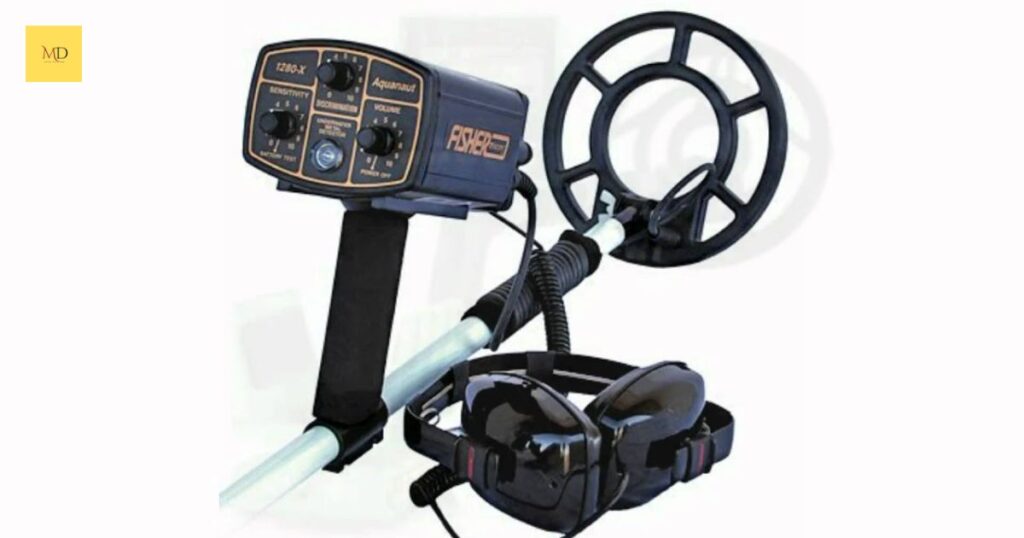A metal detector is a device that detects metal objects by creating a magnetic field. It emits signals and senses changes in the magnetic field when metal is nearby. Commonly used for security checks, treasure hunting, and archaeology, it alerts users with a sound or visual indication when metal is detected.
Uncover treasures with the power of a metal detector! Curious about finding gold? Wondering if a metal detector can detect this precious metal? Join us to explore the capabilities of metal detectors in uncovering hidden gold treasures. Can Metal Detectors Detect Gold?
Metal detectors can detect gold, but it largely depends on the detector’s technology and the size and depth of the gold. Some detectors are specifically designed for gold prospecting, using different frequencies and settings to enhance gold detection. However, smaller or deeper gold items might be more challenging to detect accurately.
Factors Affecting Gold Detection
Several critical factors influence the successful detection of gold using metal detectors. The size and purity of the gold itself play a significant role. Larger or purer gold items tend to be more easily detected compared to smaller or less pure ones. Additionally, the depth and distance of the gold from the detector’s coil impact its detectability. Shallower or closer gold deposits are more readily picked up by metal detectors compared to those buried deeply or situated farther away.
The capability of the metal detector itself is crucial. Specialized detectors designed explicitly for gold prospecting often offer improved sensitivity to small or deep-seated gold, utilizing specific frequencies and settings tailored for better gold detection. Understanding these factors is key to maximizing the chances of successfully detecting gold with a metal detector.
Size and Purity of Gold
The size and purity of gold significantly impact its detectability by metal detectors. Larger gold items are generally easier to detect due to their increased surface area, triggering a stronger signal on the detector. Small gold flakes or nuggets pose a greater challenge as they might not generate a strong enough signal for detection. Additionally, the purity of gold influences its conductivity, with purer gold being more conductive and thus more easily detected.
For successful gold detection, understanding the correlation between size, purity, and detection capabilities is crucial. Tailoring detector settings and using specialized equipment optimized for gold prospecting can enhance the chances of identifying smaller or less pure gold items. The size and purity of the gold play a pivotal role in the efficiency and accuracy of metal detectors in uncovering this precious metal.
Depth and Distance
Depth and distance play crucial roles in the effectiveness of metal detectors. The depth at which a metal detector can identify an object depends on various factors, including the technology of the detector and the size or composition of the object. Larger objects can often be detected at greater depths compared to smaller ones. Additionally, the distance at which a detector can identify metal is influenced by the electromagnetic field it emits. Usually, the detection range varies based on the power and design of the detector, affecting its ability to sense metal at different distances.
Factors like soil composition and mineral content also impact the depth and distance capabilities of metal detectors. Conductive soils or high mineralization can reduce detection depth and range by interfering with the detector’s electromagnetic field. Understanding these factors is crucial for users seeking to optimize the performance of their metal detectors in various environments and conditions.
Specialized Metal Detectors for Gold Prospecting

Specialized metal detectors crafted for gold prospecting are finely tuned to detect even the smallest traces of this precious metal. These detectors operate on specific frequencies that optimize the detection of gold, distinguishing it from other metals. Their design and settings are tailored to enhance sensitivity to gold’s unique properties, such as its conductivity and size variations, enabling prospectors to pinpoint even tiny nuggets or particles that might elude standard detectors.
These specialized detectors not only possess heightened sensitivity to gold but also often provide advanced features to aid prospectors. From offering improved discrimination to ignore unwanted targets to incorporating various search modes tailored for different gold-rich terrains, these devices are equipped to maximize the chances of discovering gold while minimizing time spent on false signals, ensuring a more efficient and fruitful prospecting experience.
Distinguishing Features
Distinguishing features set items or tools apart by highlighting their unique qualities. In the context of products, these could be standout characteristics that make them more effective, efficient, or appealing compared to others in the market. For instance, in technology, distinguishing features might include advanced functionalities, user-friendly interfaces, or innovative design elements. These aspects not only differentiate a product but often contribute to its success by meeting specific needs or solving particular problems in ways that other products might not.
When it comes to people, distinguishing features refer to those unique physical or personality traits that make individuals easily recognizable or memorable. These could be anything from a distinct laugh or a particular way of speaking to physical attributes like unusual eye color or a prominent birthmark. These features often become defining aspects of an individual’s identity, setting them apart and making them stand out in a crowd.
Optimizing Settings for Gold Detection
Optimizing settings on a metal detector for gold detection is crucial for maximizing its efficiency. Adjusting the frequency, sensitivity, and discrimination settings can significantly impact the detector’s ability to spot gold. Lower frequencies, typically under 10 kHz, are ideal for larger gold nuggets, while higher frequencies, above 18 kHz, are better suited for smaller gold pieces or gold dust. Sensitivity adjustments help in fine-tuning the detector to detect the faint signals emitted by gold, but it’s essential to balance it to avoid false signals triggered by mineralized soil.
Fine-tuning these settings is an art that requires understanding the terrain, the type of gold being sought, and the detector’s capabilities. It’s a delicate balance between maximizing sensitivity to detect gold while minimizing interference from surrounding elements. Skilled users often spend time experimenting with different settings, getting to know their detector’s nuances, and adapting to various conditions to optimize their chances of finding gold.
FAQ’s
Does gold set off security metal detectors?
Gold typically doesn’t set off standard security metal detectors commonly found in airports or public places. These detectors are designed to detect larger metal objects like weapons, so small amounts of gold, such as jewelry, usually won’t trigger them.
Can you hide gold from a metal detector?
Yes, gold can be hidden from a metal detector depending on various factors such as the size, depth, and the composition of the material used to conceal it.
Can metal detectors pick up white gold?
Yes, metal detectors can detect white gold. White gold contains metals like nickel, palladium, or silver, which metal detectors can pick up due to their metallic properties.
Conclusion
The capabilities of metal detectors in detecting gold, including white gold, showcase their versatility in uncovering precious metals. The nuanced settings and frequencies within detectors offer opportunities for finding various types of gold, though the efficiency can vary based on factors like size, depth, and the detector’s technology. Understanding these intricacies becomes key in optimizing the detection process.
The quest for gold through metal detection is not merely a technical endeavor but an art that demands patience, practice, and an acute understanding of the equipment and the environment. Success lies not just in the technology but also in the skills and knowledge of the detector’s operator. The pursuit of gold with a metal detector is a blend of science and intuition, where fine-tuning settings and techniques, alongside adapting to the terrain, are integral.











